EVEREST (April-May 2014)
Everest: Sagamartha (Nepal), Chomolungma (Tibet) 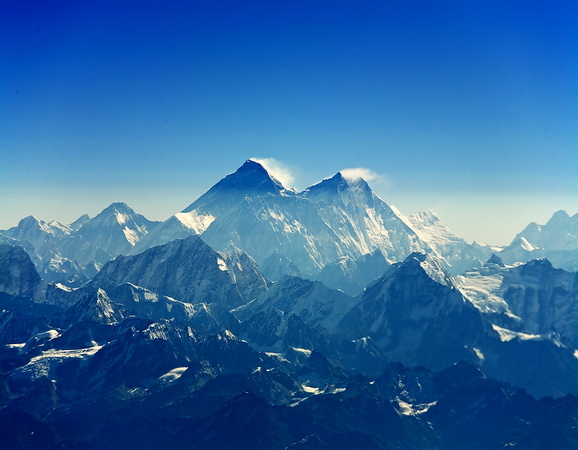
"Everest shows you the grace of great dreams, fears overcome and, sometimes, triump following the most desperate of outlooks" (www.mounteverest.net)
"The mountain is half of the sky and the slopes just go on in the dawn" (John D. Hamilton)
Expedition organisation
If all goes well, the final element and climax of the 'journey' will be an expedition to Everest - in April 2014 - organised by Chamonix-based Dream Guides (www.dream-guides.com) and led by eight times British Everest summiteer Kenton Cool. Kenton is highly regarded as an IFMGA guide with a wealth of Himalayan and alpine experience. He successfully led explorer Sir Ranulph Fiennes to the summit of Everest in 2009 and up the north face of the Eiger in 2007. Scroll down to bottom of this page to see video of Kenton's 9th summit in 2011.
Kenton Cool on summit 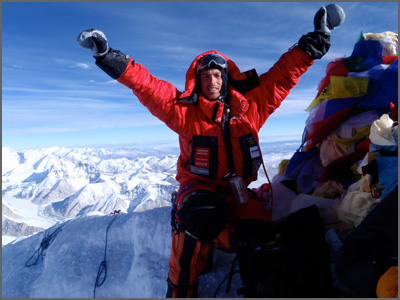
Dream Guides will be responsible for all logistics and communications on Everest and will manage the large team of Sherpa guides, porters and camp staff. To ensure safety and close supervision, Dream Guides keep the expatriate climbing team relatively small - about six climbers.
Tenative itinerary (3 April - 5 June 2014) (see map under loction menu item)
Days 1-3 Fly to Kathmandu and preparations
Day 4 Fly to Lukla
Days 5-12 Trek to Base Camp (5400m) (stay at tea houses along trail)
Days 13-57 Climbing Everest
Days 58-61 Descend to Lukla
Days 62-63 Fly to Katmandu and rest
Day 64 Fly to London
Ascent route
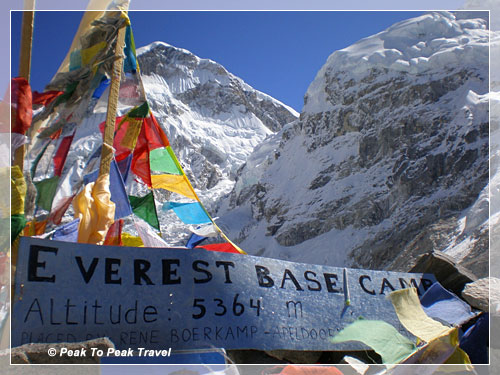
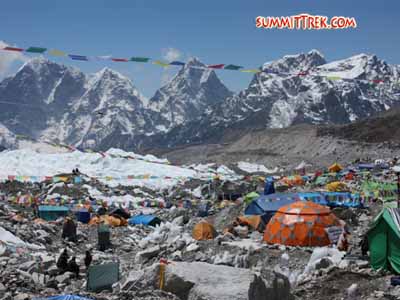
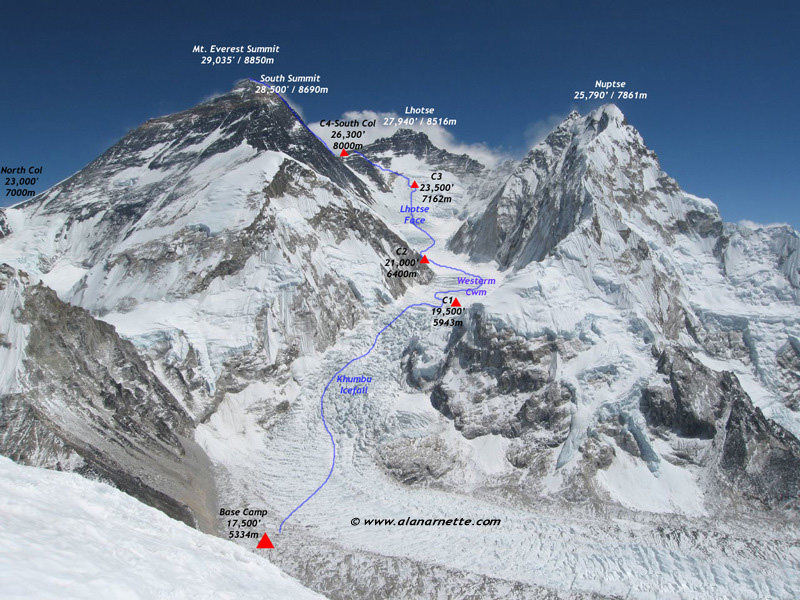
Mechanics of the climb
The route is from the south side in Nepal, via the south col. This is generally milder and less windy than the north side with less time spent at extreme altitude. As a result this route sees a higher success rate and enjoys a safer track record. Some seven weeks will be spent in base camp (acclimatising and practicing fixed rope techniques) and on the mountain. The first step upwards will be to ascend through the Khumbu ice fall. At the same time, the Sherpas will prepare the route higher up, fixing ropes through all difficult, exposed or crevassed sections, and stocking the higher camps with food, gas and oxygen in readiness for the summit push when each climber will be partnered by a Sherpa guide.
Several nights at a time will be spent at progressively higher camps, then descending to base camp to rest. Most acclimatisation nights will be at camp 2 (6400m, 21,000 ft) with two or three acclimatisation forays prior to the summit push – the exact plan decided by the leader based on weather/conditions and how each team member is doing. Final acclimatisation will be a night at camp 3 (7162m, 23,500 ft). After this the team will descend to base camp (or even lower down the valley for 4/5 days rest before the summit push.
The summit push will involve climbing up to camp 2, possibly a rest day, and then up to and overnight in camp 3, then camp 4 for a few hours rest and the summit.
Supplementary oxygen will be used at Camp 3 (7162m, 23,500 ft) and above to counter the effects of altitude, keep climbers warm and increase our speed.
Base camp will have internet access and a satellite phone. Communication on the mountain will be via handheld radios.
Steps in final assault
1. Ascent from base camp through the Khumbu ice fall and a short section of glacier to camp 1 (6000m, 19,500 ft).
2. Ascent further up the galcier to camp 2 (6400m, 21,000ft) in the Western Cym.
3. Climb up the remaining glacier and then up the 450 snow/ice slope of the Lhotse face to camp 3 (7162m, 23,500 ft) (6 hrs).
4. Climb remaining part of Lhotse face, traverse snow and rock steps across the Yellow Band and Geneva Spur to south col and camp 4 (7900m, 26,300 ft) (8 hrs).
5. Summit day: A very long day (15 hrs+). Start 10pm, traverse the Balcony, up to South Summit, over the Hillary Step and on to main summit.
6. Down to base camp.
Up the Khumbu Ice Fall
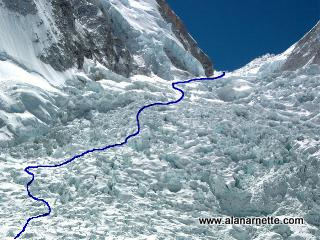
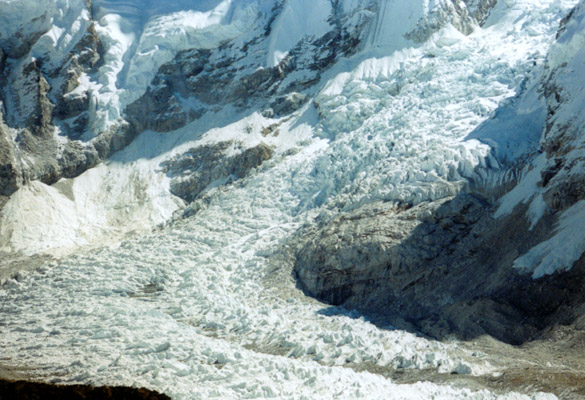
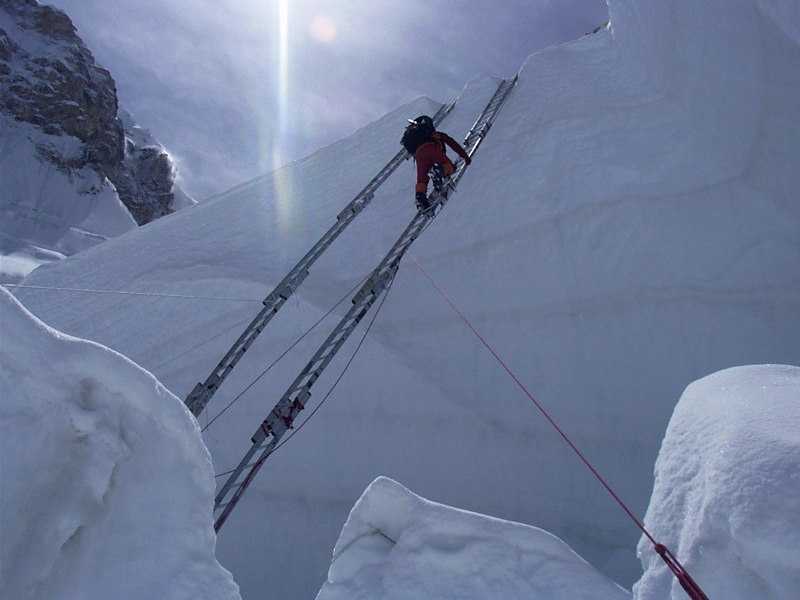
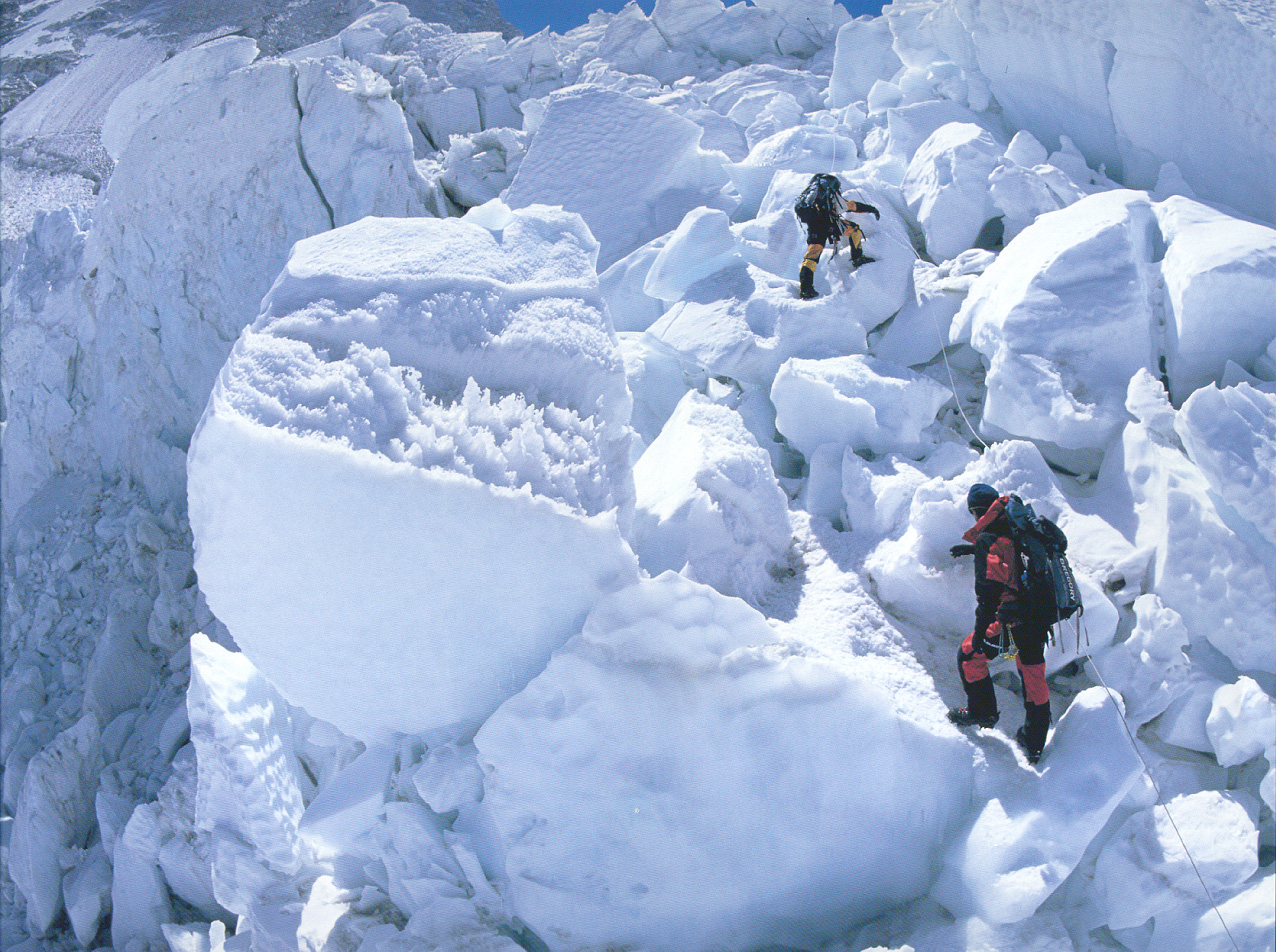
Through Camps 2 and 3
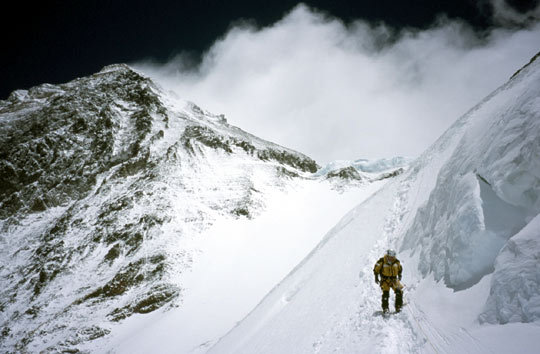
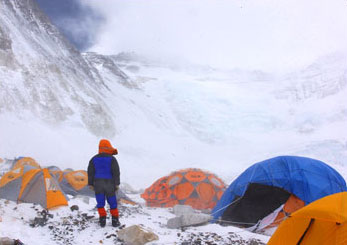
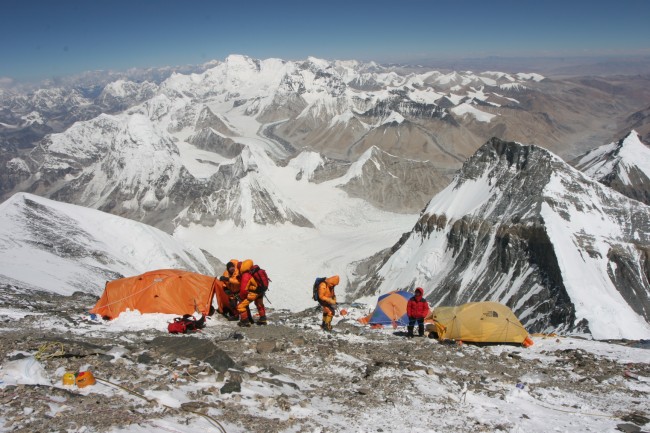
To the South Col
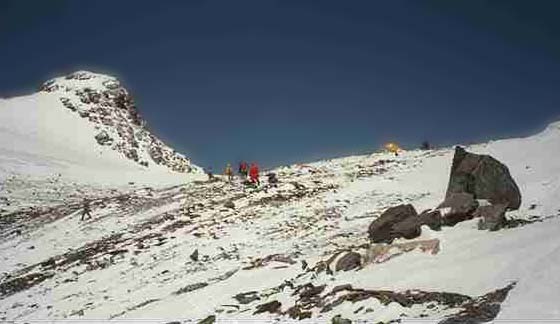
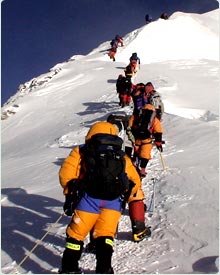
From South Col to Summit
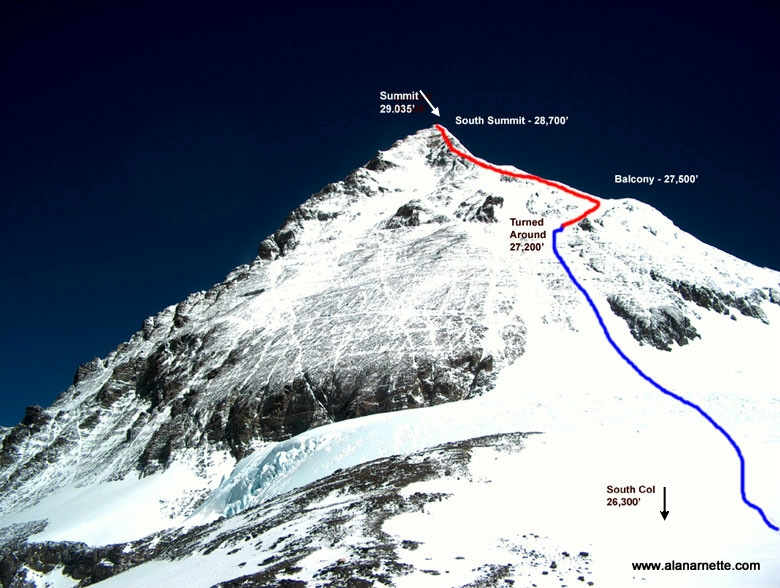
Resting on The Balcony 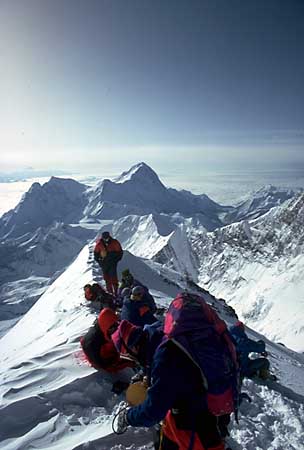
South ridge 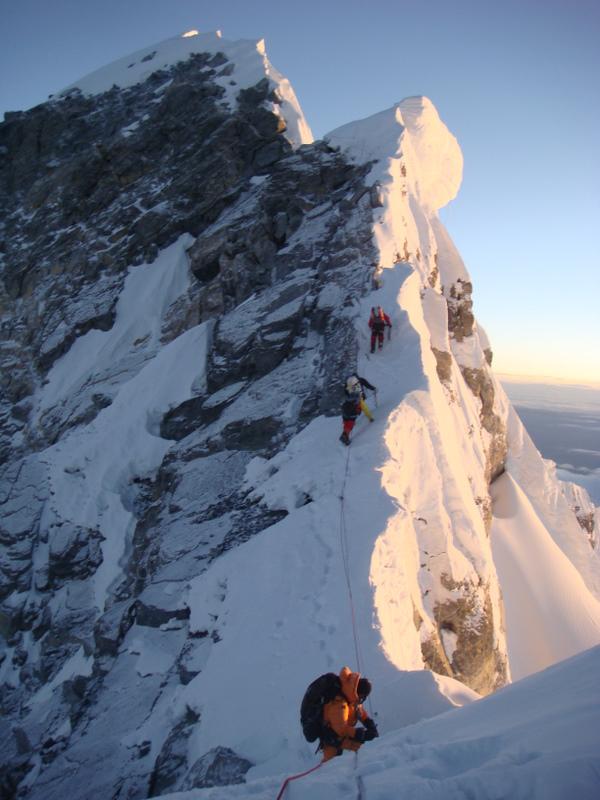
Climbing the Hillary Step, and on to the summit 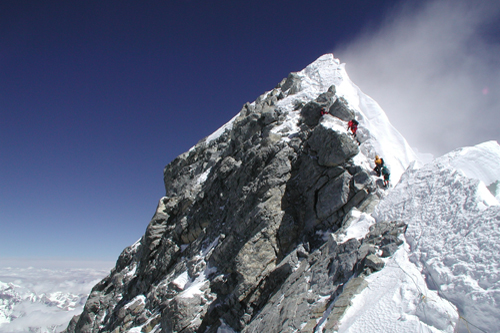
The Top of the World: Summit to Shout About!
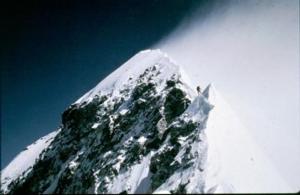
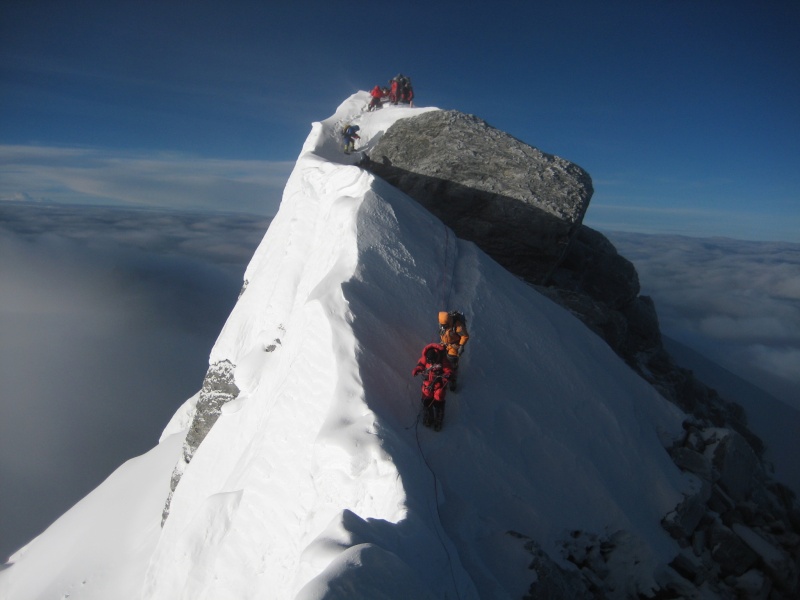
Sherpa Tenzing Norgay, 1953 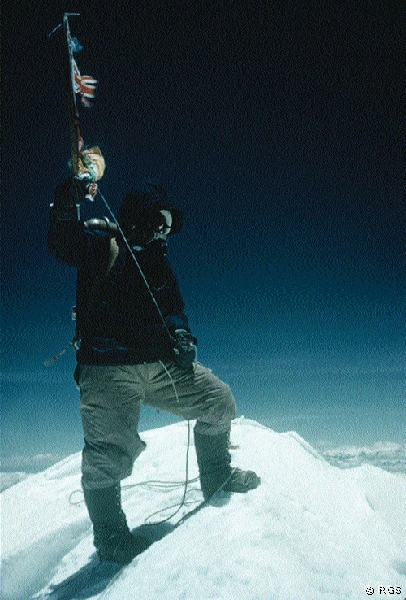
Some facts about Everest
- Everest is usually attempted in April-May when the weather is most favourable
- Everest lies on the border between Nepal and Tibet
- Height: 29,035ft (8850m) -found to be 6ft higher in 1999
- 2010: 29 expeditions (21 south side, 8 north side). 513 people summited.
- 2010 - Sherpas brought down 4.8 tons of rubbish
- Some notable multiple summiteers: Apa Sherpa, Nepl (x 20), Kenton Cool, UK (x8)
- Youngest is Jordan Romero, USA (13); oldest is Bahadur Sherchan, Nepal (76)
- Youngest British female is Bonita Norris (22) in 2010
- New Chinese age limit for north side: 18-60 years
- Everest kills - mainly on the way down. Getting down to a 'safe' altitude below 26,000ft and out of the so-called 'death zone' is critical. The human body can only survive for a limited time above this altitude - usually about 36 hours.
- 216 climbers are known to have died on the mountain: some because of accidents, atrocious conditions or just bad luck; but many more because they were just poorly prepared or inadequately equipped or pushed themselves beyond their limits - and took unwise or foolhardy risks to reach the top when they should have retreated to try again on another day. But the risks can be greatly minimised by good planning and leadership.
- A minute jumping spider can be found up to 22,000ft.
See video of Kenton Cool's 9th summit in 2011